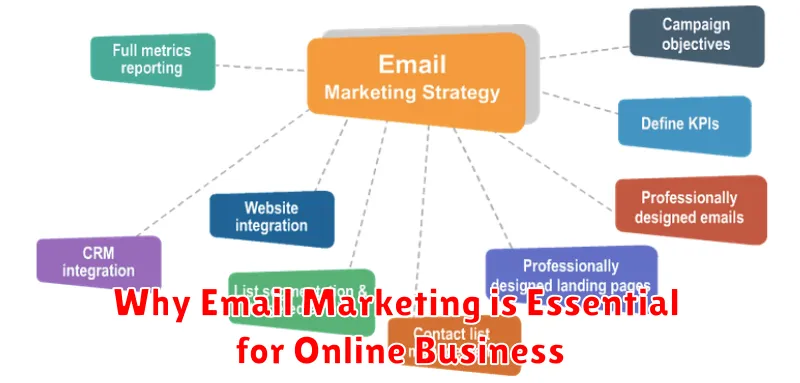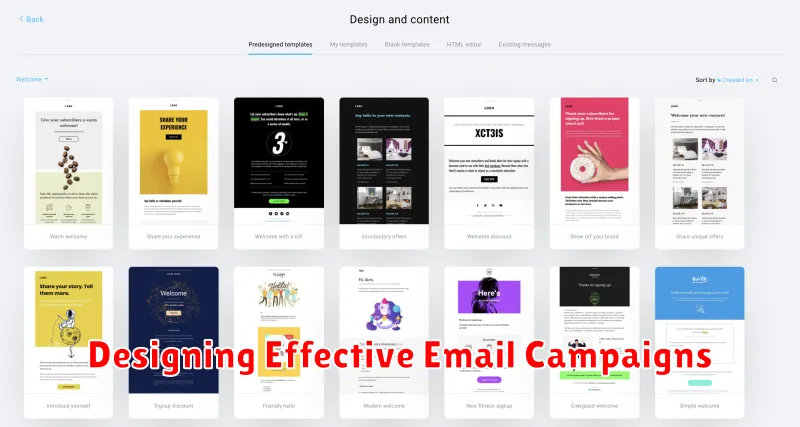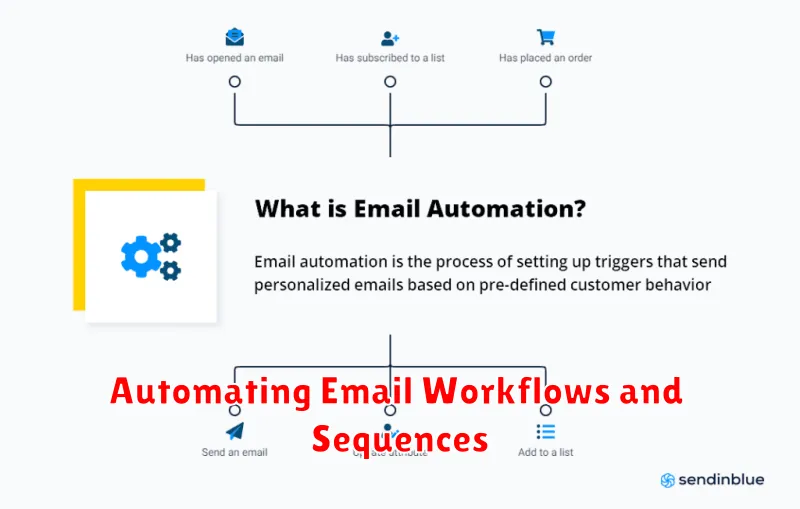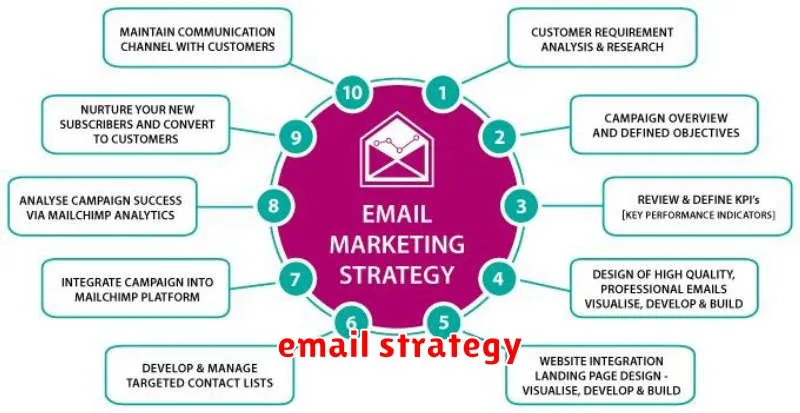This comprehensive step-by-step guide will equip you with the knowledge and strategies to master email marketing for your online business. Learn how to build a targeted email list, craft compelling email campaigns that drive sales and customer engagement, and analyze your results to optimize your marketing strategy. Discover the secrets to leveraging email automation, personalization, and best practices for achieving significant return on investment (ROI) in your online marketing efforts.
Why Email Marketing is Essential for Online Business

In today’s digital landscape, email marketing remains a crucial tool for online businesses. It offers a direct line of communication with your target audience, bypassing the algorithms and ever-changing dynamics of social media platforms.
High ROI: Email marketing boasts a significantly higher return on investment (ROI) compared to other digital marketing strategies. A well-crafted email campaign can generate substantial leads and sales with relatively low costs.
Targeted Messaging: Unlike broad social media campaigns, email allows for highly targeted messaging. You can segment your audience based on demographics, purchase history, and behavior, delivering personalized content that resonates with each individual.
Brand Building: Consistent, engaging email communication helps build brand awareness and loyalty. Regular newsletters, product updates, and personalized offers foster a strong connection with your customers, transforming them into brand advocates.
Measurable Results: Email marketing provides valuable data and analytics, allowing you to track key metrics such as open rates, click-through rates, and conversions. This data-driven approach enables continuous optimization and improvement of your campaigns.
Customer Retention: Email marketing is instrumental in customer retention. By nurturing relationships through email, you can encourage repeat purchases and build long-term customer loyalty, significantly impacting your bottom line.
How to Build a Targeted Email List
Building a targeted email list is crucial for successful email marketing. It allows you to send relevant messages to subscribers genuinely interested in your products or services, leading to higher engagement and conversion rates.
Use lead magnets – valuable free resources like ebooks, checklists, or webinars – in exchange for email addresses. Make sure your offer directly relates to your target audience’s needs and interests.
Optimize your website with prominent signup forms strategically placed on high-traffic pages. Keep the forms short and simple, minimizing the required information.
Run contests and giveaways to incentivize sign-ups. Promote these contests on your social media channels and website to reach a wider audience.
Utilize social media platforms to promote your lead magnets and signup forms. Engage with your followers and encourage them to subscribe.
Integrate email marketing with your CRM (Customer Relationship Management) system to segment your audience based on demographics, purchase history, and engagement levels. This allows for highly personalized email campaigns.
Employ targeted advertising on platforms like Google Ads and social media to reach potential subscribers interested in your niche.
Partner with other businesses in your industry to cross-promote each other’s email lists. This expands your reach to a new audience.
Regularly clean your email list to remove inactive subscribers and improve deliverability. This ensures your emails reach the right inboxes.
By consistently implementing these strategies, you can build a highly engaged and targeted email list, maximizing the effectiveness of your email marketing efforts.
Designing Effective Email Campaigns

Designing effective email campaigns requires a strategic approach focusing on several key elements. First, segmentation is crucial. Dividing your audience into targeted groups based on demographics, behavior, or purchase history allows for personalized messaging that resonates better and improves open and click-through rates.
Next, crafting compelling subject lines is paramount. Keep them concise, intriguing, and relevant to the email’s content. A/B testing different subject lines can help determine which perform best for your audience.
The email’s design should be clean, visually appealing, and mobile-friendly. Use a consistent brand identity and ensure easy navigation. Include a clear call to action (CTA) that encourages recipients to take the desired action, whether it’s making a purchase, visiting a website, or signing up for a service.
Finally, email deliverability is essential. Maintain a clean email list, avoid spam triggers, and ensure your emails are authenticated to improve inbox placement. Regularly monitor your email metrics—open rates, click-through rates, and conversion rates—to track campaign performance and make data-driven improvements.
Creating Compelling Subject Lines and CTAs
Crafting effective subject lines is crucial for email marketing success. They should be concise, personalized, and intriguing enough to entice recipients to open your email. Avoid using spam trigger words and focus on highlighting the value proposition for the reader. A/B testing different subject lines can help determine what resonates best with your audience.
Your call to action (CTA) is equally important. It needs to be clear, concise, and compelling. Use strong action verbs and make it easy for recipients to take the desired action. Consider using different CTAs to see which performs best. For example, instead of just “Learn More,” try “Get Your Free Guide Now!” or “Shop the Sale.” The CTA should align with the overall goal of your email campaign.
Remember, both your subject line and CTA work together to drive engagement and conversions. A strong subject line piques interest, while a clear CTA guides the recipient toward the desired action. By optimizing both, you can significantly improve the effectiveness of your email marketing campaigns.
Segmenting Your Audience for Better Results
Effective email marketing relies heavily on audience segmentation. Instead of sending generic blasts to your entire list, segmenting allows you to target specific groups with tailored messages. This significantly improves open rates and click-through rates.
Consider segmenting your audience based on various criteria such as demographics (age, location, gender), behavior (past purchases, website activity), and engagement (email open rates, click-through rates). For example, you could create segments for first-time buyers, loyal customers, or those who abandoned their shopping carts.
By tailoring your email content to each segment’s unique characteristics and interests, you can increase relevance and resonance. This personalized approach fosters stronger customer relationships and ultimately drives better results, such as higher conversion rates and increased sales.
Tools like email marketing platforms often offer built-in segmentation features, simplifying the process. Start with a few key segments and gradually expand as you learn more about your audience’s preferences and behavior.
Automating Email Workflows and Sequences

Automating your email workflows and sequences is crucial for efficient email marketing. Automation allows you to send targeted emails based on specific customer actions or time triggers, without manual intervention. This saves you significant time and resources.
Workflows typically focus on single actions, such as sending a welcome email after signup. Sequences, however, involve a series of automated emails delivered over a set period, such as a nurture sequence guiding new leads through your sales funnel. They are often triggered by specific actions, like downloading a resource.
Effective automation requires careful planning. Define clear goals for each sequence, map out the customer journey, and craft compelling email copy. Utilize email marketing platforms that offer robust automation features, allowing for easy setup and management of your workflows and sequences. Regularly monitor your automation performance using key metrics to refine your strategies and optimize results.
By implementing automated email workflows and sequences, you can nurture leads, increase engagement, and ultimately drive more conversions and sales, significantly improving your email marketing ROI.
Tracking Open Rates and Conversions
Tracking open rates and conversions is crucial for evaluating the success of your email marketing campaigns. Open rates indicate how many recipients viewed your email, providing insights into subject line effectiveness and audience engagement.
Conversion rates, on the other hand, measure how many recipients completed a desired action after opening the email (e.g., making a purchase, signing up for a trial). This metric directly reflects the effectiveness of your email’s call to action and overall campaign goals.
Most email marketing platforms provide built-in analytics dashboards to track these metrics. By analyzing these key performance indicators (KPIs), you can identify what’s working well and refine your strategies for improved results. For example, low open rates might suggest a need for improved subject lines, while low conversion rates may indicate issues with the email’s design, call to action, or offer itself.
Regularly monitoring open rates and conversion rates allows for data-driven optimization, ensuring your email marketing efforts effectively contribute to your business objectives.
Avoiding Common Email Marketing Mistakes
Successful email marketing hinges on avoiding common pitfalls. One critical error is neglecting list segmentation. Sending generic emails to everyone dilutes your message and reduces engagement. Instead, segment your audience based on demographics, purchase history, or website behavior for more targeted and effective campaigns.
Another frequent mistake is ignoring email deliverability. Poor email practices, like using purchased lists or failing to authenticate your domain, can lead to your emails landing in spam folders. Prioritize maintaining a clean list, using proper authentication methods (like SPF and DKIM), and consistently monitoring your sender reputation.
Compelling subject lines are crucial for getting your emails opened. Avoid generic or misleading subjects. Instead, craft concise and intriguing subject lines that accurately reflect the email’s content and entice recipients to click.
Finally, don’t overlook the importance of mobile optimization. A significant portion of emails are opened on mobile devices. Ensure your emails are responsive and display correctly on various screen sizes for optimal user experience and engagement.
By avoiding these common mistakes, you can significantly improve your email marketing ROI and cultivate stronger relationships with your customers.

